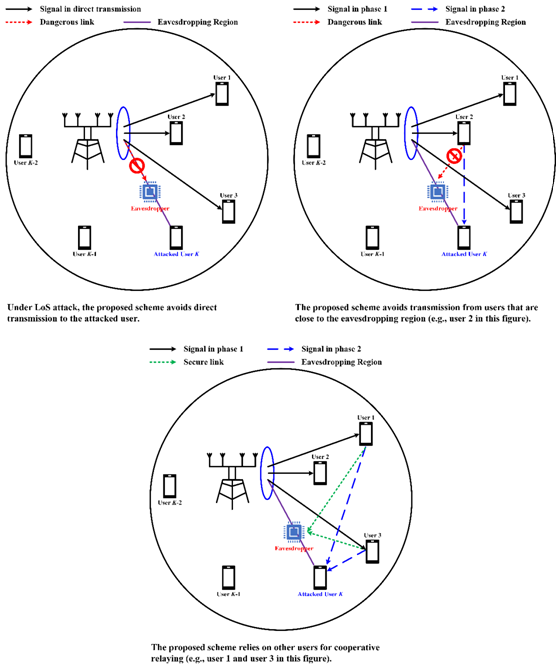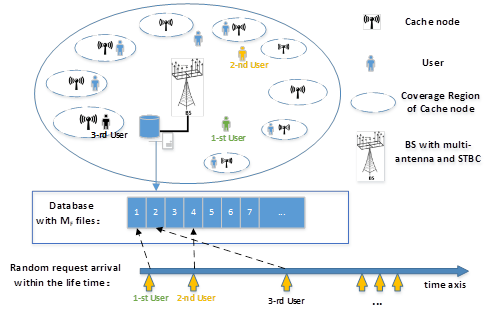In an age where wireless communication is becoming more ubiquitous, the speed and security of our data is a going concern for researchers and societies across the globe. However, cutting-edge research by teams at Southern University of Science and Technology (SUSTech) could see both issues closer to a solution.
Teams led by Associate Professor Rui Wang (Electronic and Electrical Engineering) and Associate Professor Qi Hao (Computer Science and Engineering) have combined with other research teams to publish important papers in high-impact academic journals IEEE Journal on Selected Areas in Communications (IF = 9.302) and IEEE Transactions on Communications (IF = 5.69).
The paper published in IEEE Journal on Selected Areas in Communications was titled “Angle aware user cooperation for secure massive MIMO in Rician fading channel.” The paper looked at information security technology for 5G communications.
Massive multiple-input multiple-output (MIMO) communications can be highly secure if the relevant radio frequency signals are concentrated around the legitimate users. However, there is a security hole where eavesdroppers can position themselves between the transmitter and the receiver, taking advantage of legitimate users through line-of-sight attacks.
The research group developed a security scheme centered on collaboration between users. This cooperative relaying between users can predict likely eavesdropping regions. The system would then transfer data through users with high-security factors, rather than those with low-security factors. Those near the eavesdropping region would be prohibited from transmitting, effectively blunting any line-of-sight attack.

Figure 1. Information security technology based on user collaboration in 5G / B5G massive MIMO systems
In their analysis, the research team found that they were better able to predict the eavesdropping channels via angle domain integration. Their algorithm, which is based on mirror descent, was also simple to implement, highly scalable for antenna types, and user configurations.
Research Assistant Professor Shuai Wang was the first author of the paper. Associate Professor Rui Wang was the correspondent author. Significant contributions came from Associate Professor Miaowen Wen (South China University of Technology), Professor Minghua Xia (Sun Yat-sen University), Associate Professor Qi Hao (SUSTech), and Associate Professor Yik-Chung Wu (University of Hong Kong).
The research received support from the National Natural Science Foundation of China, the Natural Science Foundation of Guangdong Province, the Major Science and Technology Special Project of Guangdong Province, and the Fundamental Research Funds for the Central Universities.
The paper published in IEEE Transactions on Communications was titled, “Joint Optimization of File Placement and Delivery in Cache-Assisted Wireless Networks with Limited Lifetime and Cache Space.” The researchers examined a new optimization method for data transfer in wireless caching networks.
Wireless caching technology reduces the load on wireless networks by storing popular files in nodes at the edge of the network for easy downloading. The data does not need to be downloaded from the base station, reducing the load on the wireless network.
The research group optimized the transmission and placement of cache files in their design of a simple wireless resource scheduling algorithm. Their algorithm is designed to reduce resource consumption and base stations. Since the number of times a file might be accessed is random, traditional algorithms cannot work out the optimal placement of files. The research group developed a framework that transformed the problem into a series of different stages, creating a system for algorithms to find a better solution.

Figure 2. 5G / B5G wireless cache network
The first author of the paper was masters student Bojie Lv. Associate Professor Rui Wang was the correspondent author. Significant contributions came from Associate Professor Ying Cui (Shanghai Jiaotong University), Professor Yi Gong (SUSTech), and Associate Professor Haisheng Tan (University of Science and Technology of China). This work received support from the National Natural Science Foundation of China, the Natural Science Foundation of Guangdong Province of China, and the Shenzhen Science and Technology Innovation Commission.
IEEE Journal on Selected Areas of Communication paper: https://arxiv.org/pdf/2002.10327.pdf
IEEE Transactions on Communications paper: https://ieeexplore.ieee.org/document/8959295
Proofread ByXia Yingying
Photo ByDepartment of Electrical and Electronics Engineering, Qiu Yan